Economy grows 0.7pc in June quarter, stronger than expected
Josh Frydenberg says premiers must reopen at 80pc vaccination to stave off recession.

Economic growth slowed to 0.7 per cent in the June quarter and will contract in the three months to September, with Josh Frydenberg calling on the premiers to honour the national plan and reopen at 80 per cent vaccination rates to help stave off a second pandemic recession.
The ABS national accounts data showed the economy was 9.6 per cent larger in the June quarter when compared to the same period in 2020 – the biggest year-on-year increase on record – but real GDP growth decelerated sharply from 1.8 per cent in the previous quarter.
Despite 29 days of lockdowns across five states and territories in the June quarter, a strong lift in household and business spending, government infrastructure investment and housing construction activity offset a fall in mining export volumes to underpin the result.
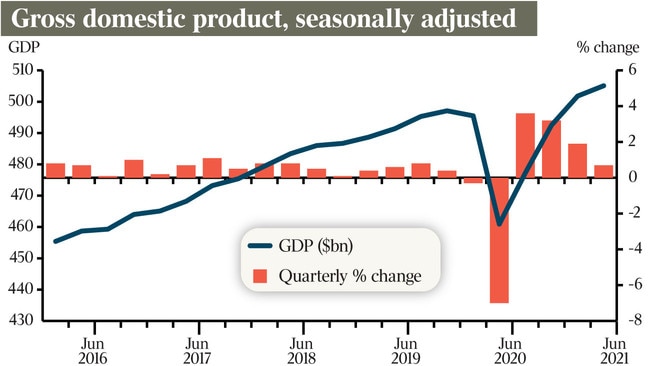
The Treasurer said Australia’s economy was “remarkably resilient” and would bounce back quickly when lockdowns ended, but he acknowledged the better than expected growth in the June quarter would be of “little comfort to the millions of our fellow Australians in lockdown”.
Treasury is forecasting the economy to fall by at least 2 per cent in the September quarter and Mr Frydenberg appealed to the states and territories to follow the national cabinet’s four-phase reopening plan. “My message to Mark McGowan, to Annastacia Palaszczuk is that there was a plan agreed to by them … which provides their public with a pathway forward,” Mr Frydenberg said. “Eliminating the Delta variant is an impossibility. It can’t be done.
“No other country has done it. We can’t do it. So we have to learn to live with the virus. That means rapidly vaccinating as many people as possible, bringing more supply online and then easing those restrictions as we get to those targets.”
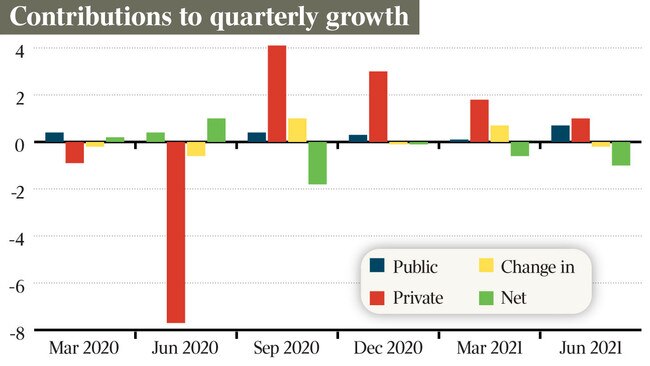
With the commonwealth funding $1bn a week in direct Covid-19 payments and lockdowns costing the economy $2bn a week, senior government sources said the September quarter contraction could be as high as 3 per cent.
Easing of restrictions in Victoria and NSW – the nation’s economic powerhouses – would drive some economic recovery in the final three months of the year. But if harsh lockdowns in NSW, Victoria and ACT persisted well into the December quarter, economic growth would remain in negative territory.
Mr Frydenberg said Australia must “open up as one”, describing as unrealistic that states and territories could close borders indefinitely. “I’m confident that our economy will bounce back when restrictions are eased … when we meet the 70 to 80 per cent (vaccination) targets,” he said.
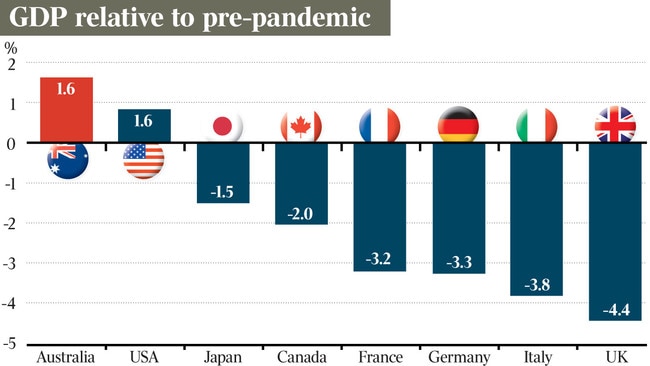
Domestic demand drove the better than anticipated result, with weather-related disruptions to mining volumes slashing one percentage point off economic growth in the quarter.
ABS head of national accounts Michael Smedes said “lockdowns had minimal impact on domestic demand, with fewer lockdown days and the prolonged stay-at-home orders in NSW only commencing later in the quarter”.
Australians also dipped into the estimated $200bn in excess cash reserves built up since last year’s national lockdown, with the household savings ratio dropping from 11.6 per cent to a still high 9.7 per cent.
Mr Frydenberg said there should be “no expectation that the scale of our economic support would need to continue in the same way it is today” once the nation hit its vaccine targets.
“There may be some restrictions that are in place once you get to 70 per cent and before you get to 80 per cent. That would have an impact on the economy and I would need to factor that in to our decision-making.
“But the large programs we have in place now are not required once you get to those vaccination rates. That economic support can’t continue. We are borrowing from future generations to meet these expenditures today.”
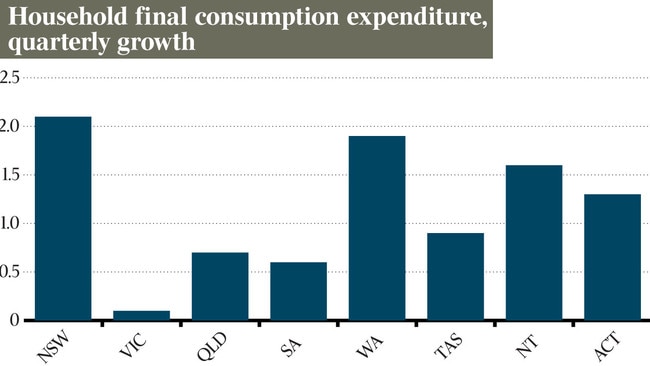
CommSec chief economist Craig James predicted a “significant contraction of near 4 per cent” in the September quarter.
“It is hoped that an easing or end to lockdowns will occur later this month in the ACT, NSW and Victoria, allowing the economy to rebound in the December quarter,” Mr James said. “Vaccination is the road out of the crisis, allowing economies to reopen.”
Business Council of Australia chief executive Jennifer Westacott said the “data doesn’t reflect where we are today”.
“The economy is resilient but the longer hard border closures and prolonged lockdowns remain, the less resilient and less competitive we become,” she said.
Mr Frydenberg said the economy was 1.6 per cent larger than it was before the pandemic, putting it ahead of the US, Japan, Canada, France, Germany, Italy and Britain.
Opposition Treasury spokesman Jim Chalmers said the national accounts showed the economy was “slowing even before the current lockdowns in Sydney and Melbourne”.
Dr Chalmers targeted the speed of the vaccination rollout, as countries with high inoculation rates accelerate economic growth by reopening international travel and lifting Covid-19 restrictions.
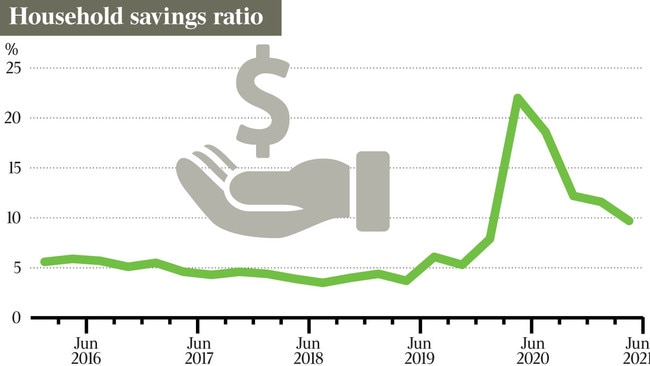
“Things will get worse before they get better. Australia’s growth is now slower than the United States, United Kingdom and OECD average,” he said. “At budget time, the Treasurer said Australia was at the front of the pack and our economy was roaring back, but we now know it was slowing then and shrinking now.”
Household spending increased 1.1 per cent and added 0.6 percentage points to growth, driven by spending on services such as travel and hospitality, which lifted 1.3 per cent “as Covid-19 restrictions continued to ease around Australia”.
Business investment rose 2 per cent and contributed 0.3 percentage points to growth, while dwelling investment increased for the fourth consecutive quarter, rising 1.7 per cent “reflecting continued demand since the introduction of the HomeBuilder scheme”.
Government demand added a large 0.7 percentage points to growth, despite the end of JobKeeper in March, as state and local governments continued to plough money into infrastructure projects.
Public spending climbed 1.3 per cent, reflecting the significant increase in health measures such as the vaccine rollout.
Net trade weighed on growth as mining commodity export volumes fell through the quarter, even as soaring prices – particularly for iron ore – drove miners’ operating surplus up 16.9 per cent.
More Coverage
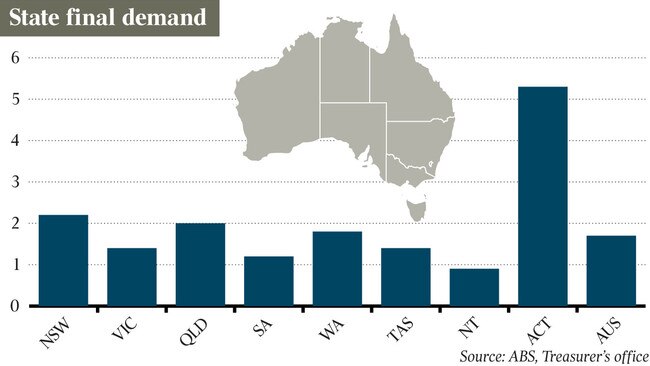

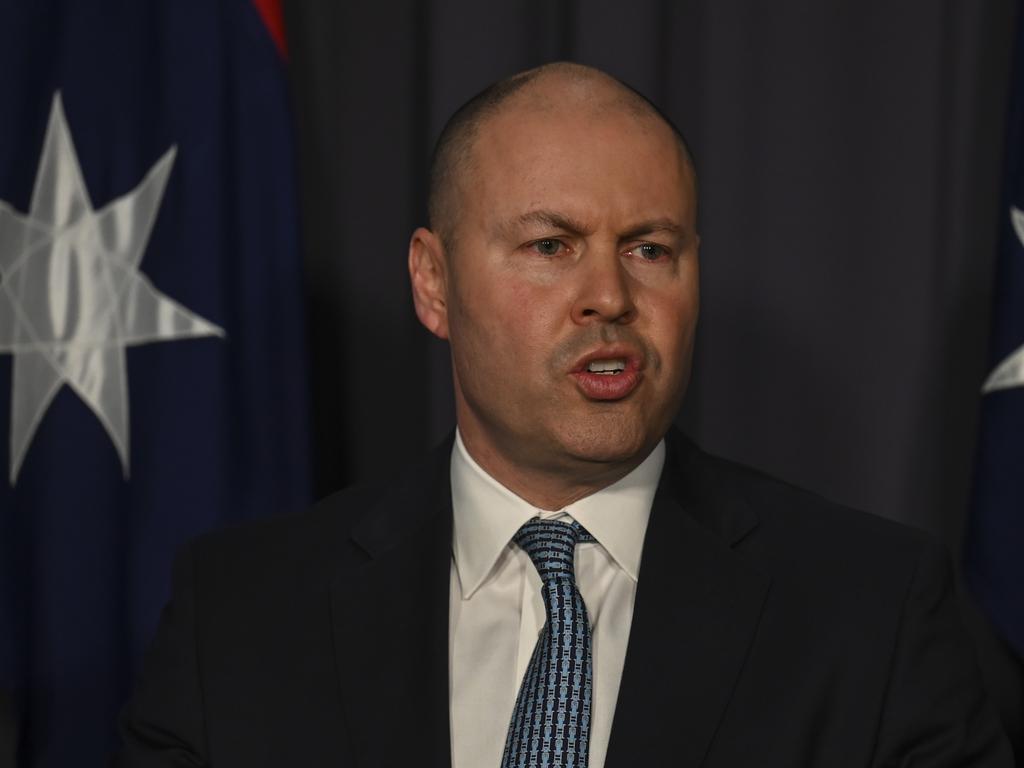
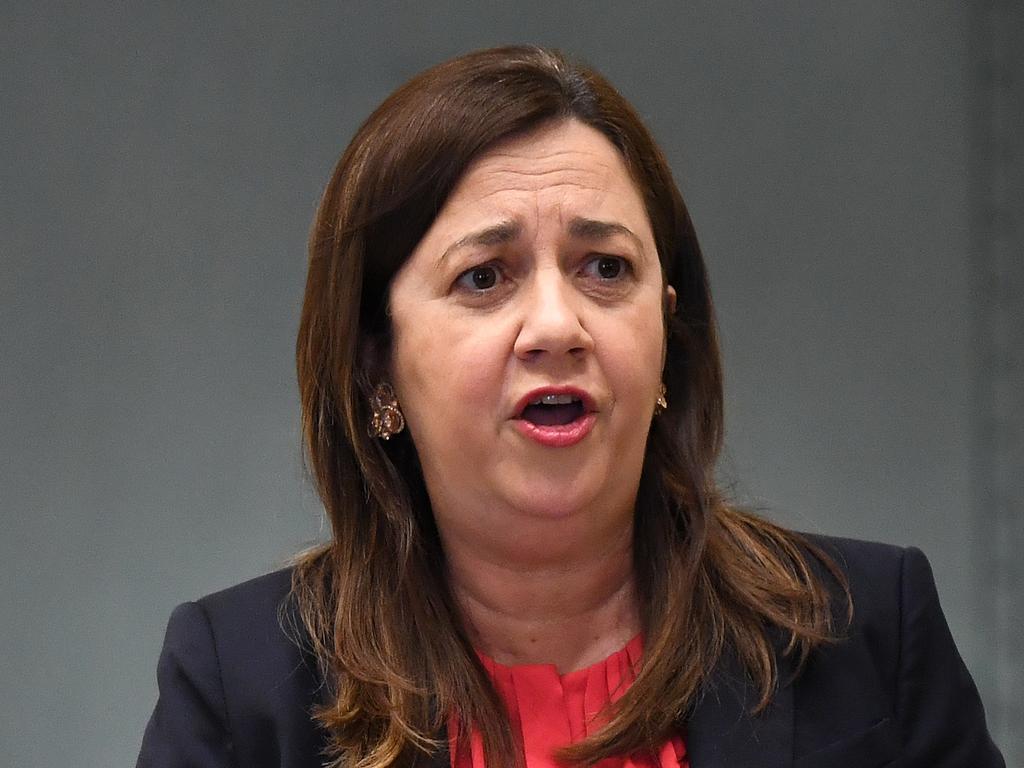




To join the conversation, please log in. Don't have an account? Register
Join the conversation, you are commenting as Logout